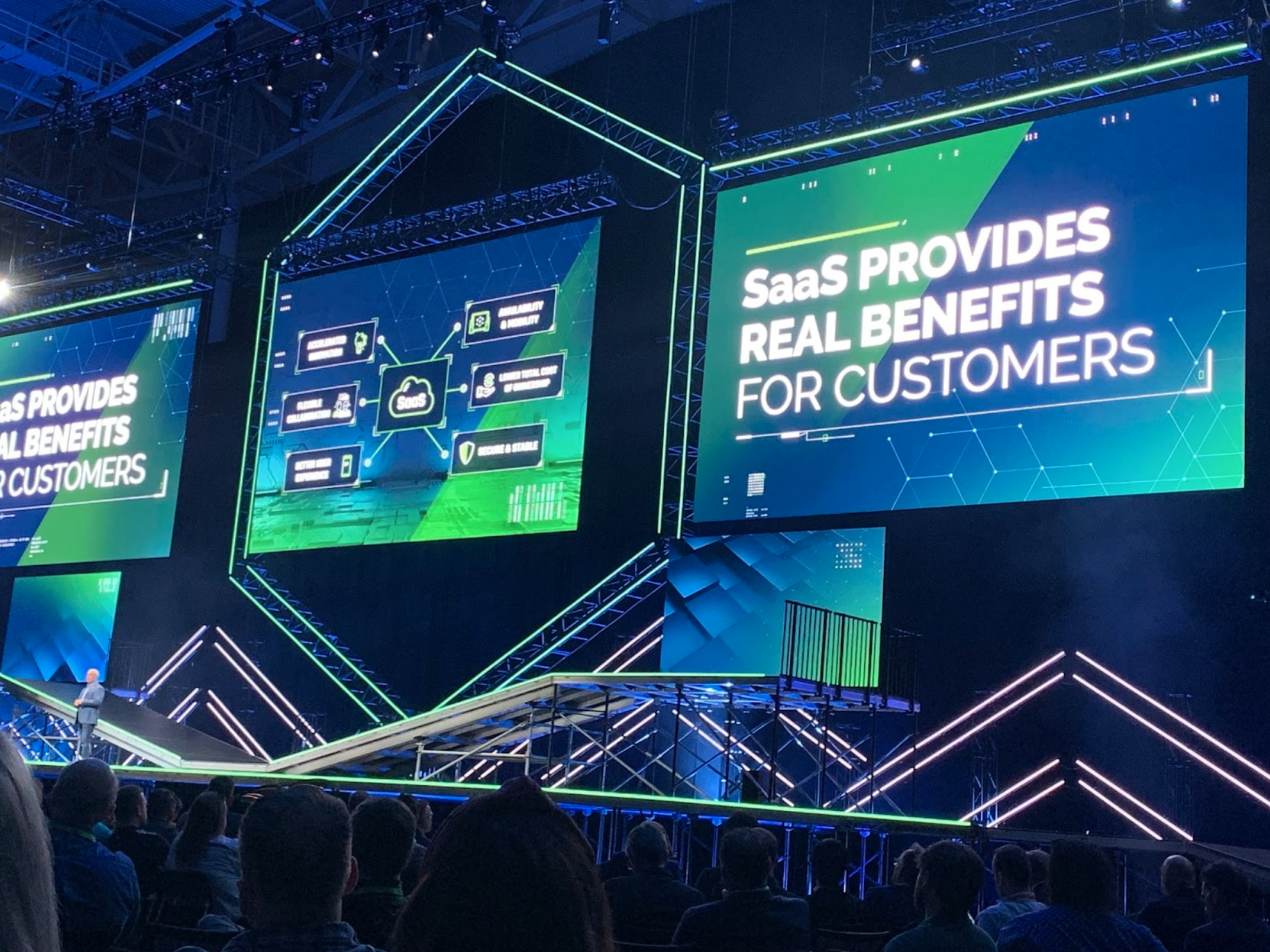The first in-person Liveworx conference in 3 years did not disappoint. From the insightful opening keynote from CEO Jim Heppelmann to the final day of breakout sessions, the event was packed with content spanning all facets of the product lifecycle. All sessions captured the essence of PTC’s vision to help companies establish a closed-loop, model-based, digital thread.
The biggest takeaways for me from the conference were PTC’s advancements in digital 3D landscape or “metaverse” technology, their push toward Cloud-based solutions, and their strategic partnerships with ANSYS for simulation and aPriori for sustainability as well as their acquisition of ServiceMax to bring service capabilities into the PTC ecosystem.
Industrial Metaverse
Defined by PTC as blending the digital and physical world to solve spatial problems in engineering, manufacturing, and field service operations, the Industrial Metaverse improves decision making by applying context, expertise, and historical data to operational issues. The technology may still be in co-innovation stages and not widely available to PTC customers, but the progress PTC has made demonstrates another wave in digital transformation, this one pushing companies toward 3D problem-solving and training for greater efficiency and safety. Aberdeen’s data aligns with PTC’s direction, revealing that Best-in-Class companies are 41% more likely to be working to implement virtual and immersive experiences for service and maintenance.
With access to the Industrial Metaverse, users can scan a space using LiDAR sensors on an iPhone or iPad to create a virtual world within minutes. Knowledge experts can then drop into the virtual space and assess what’s going on. They can instruct technicians on-site to make adjustments with comprehensive collaboration tools, and they can work on problem-solving in the space even when the technician is not there. These capabilities save time and money on sending experts and technicians on-site (especially to remote locations) as well as improve time-to-resolution and employee experience. With the skills gap in engineering, manufacturing, and service growing, companies need to give new frontline workers the right tools to access the expertise of experienced technicians and feel like they’re not alone in challenging situations.
Applications for the Industrial Metaverse are still making themselves known, but some key service use cases include:
- Remote support – having the expert drop into your context and lend you a hand
- Training – allowing people to gain knowledge of a new product or variation
- Planning – enabling the team to get together virtually and work through problems together, sometimes before you even get on-site
- Work across time – leveraging the virtual space even when the on-site technician is not available, or scanning the space again and again to track changes
Engineering and manufacturing applications are still in the works, but there are many opportunities on the horizon. Whether it’s improving efficiency and experience of the labor force working on the factory floor or performing “what if” analytics over time for better planning and agility, the Industrial Metaverse has a bright future. Even Meta CEO Nick Clegg recently commented on the value the Metaverse can bring for training.
Cloud-Based Solutions
Aberdeen’s research shows that 24% of manufacturers rank On-Demand / SaaS / Cloud deployment model as one of their top four criteria when they are seeking new technology solutions. What’s more, 53% of manufacturers believe cloud solutions will be a key area of adoption over the next 12 months to support their quality initiatives. PTC is listening to their customers and rolling out PTC Atlas, a connected platform for Cloud offerings for all their solutions.

Built on top of the Cloud infrastructure of OnShape, PTC Atlas provides seamless collaboration on design files, accessibility across the organization, and new Cloud capabilities for each solution. I spoke with John McEleney, co-founder of OnShape, and it was inspiring to hear him talk about PTC’s road to the Cloud and how the project that began with PTC’s acquisition of OnShape in 2019 was finally coming to fruition. PTC hopes to have 25% of their sales be SaaS based by the end of 2023.
Strategic Partnerships
PTC’s partnership with ANSYS (announced at Liveworx 2018) and acquisition of ServiceMax back in January 2023 stretch the value of PTC’s solutions across the entire product lifecycle. These companies mesh well because of their customer-centric approach. As said by Neil Barua, President of Service Lifecycle Management at PTC and former CEO of ServiceMax, the acquisition isn’t just about bringing service capabilities to PTC – it’s about breaking down walls in the organization and breaking down silos by connecting frontline service workers to the rest of product lifecycle operations.
The same could be said for PTC’s partnership with ANSYS. The integration of ANSYS’s simulation capabilities into PTC’s product development solutions enables design engineers to run their own simulations up front, breaking down barriers between designers and dedicated simulation experts to shorten time-to-market. Aberdeen’s research shows that verifying the design earlier in the development process is a key strategic action for the Best-in-Class. To learn about the benefits of implementing simulation early in the design process, be sure to read the report linked in the sidebar.
Takeaways
All in all, attending Liveworx 2023 was a valuable experience. While it was powerful to look behind the curtain at one of the industry’s leaders, the true value for me came through the interactions. Conversations with PTC’s Reality Lab leaders, augmented reality and design experts, SaaS solution spearheaders, and many others have further opened my eyes to the endless possibilities of innovation.




